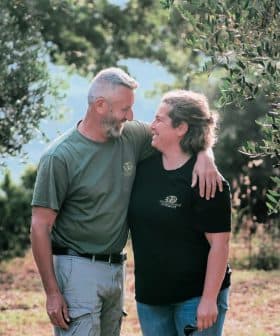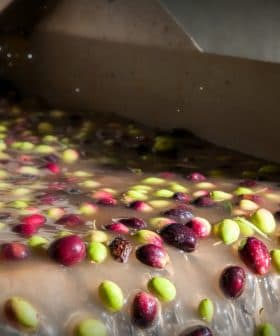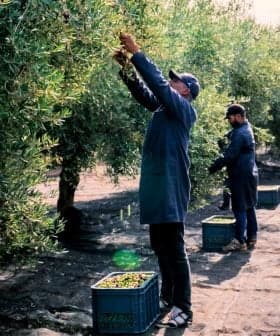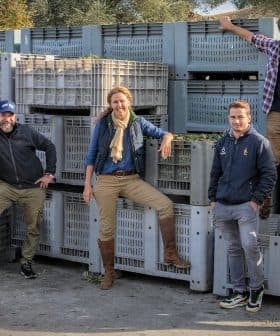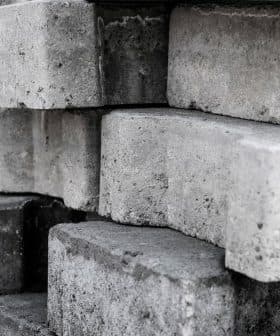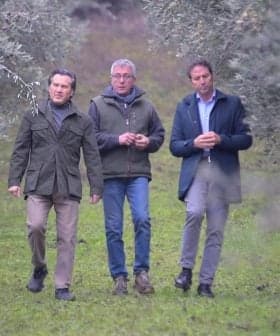The Expertise Behind Tamia’s Sustainable Pursuit of Excellence
Pietro Re at Tamia produces top quality extra virgin olive oils and aims to bring new technology and practices to the sustainable brand.
 Pietro Re at Tamia farm (Photo: Maurizio Di Giovancarlo)
Pietro Re at Tamia farm (Photo: Maurizio Di Giovancarlo) Tamia’s success story began in Tuscia, producing premium extra virgin olive oils that recently won Gold Awards at the NYIOOC. The company, led by Pietro Re, focuses on sustainability, high production quality, and preserving the traditional groves of native varieties in the region to create distinguished and recognizable oils.
In Tuscia, the land of volcanic origin once settled by Etruscans, Tamia’s success story began early last century. Tamia’s flourishing olive groves give life to premium extra virgin olive oils at the heart of this fascinating territory dotted with ancient hamlets and nature trails.
The producer has recently enjoyed success at the NYIOOC (New York International Olive Oil Competition), where Gold Awards went to its Tamia Iron Organic Caninese and Tamia Gold Organic Blend at the 2022 contest.
See Also:The World’s Best Olive Oils“The activity of our company started in 1920s,” Pietro Re told Olive Oil Times. “In the warehouse, I recently found a little chair made of olive wood that was used by the olive pickers to rest during harvest, with the date 1922 carved on it. This year, after 100 years, we are planting a new olive grove.”
A strong-willed entrepreneur with remarkable foresight, Re took the reins of the family farm in 2012. From there, he created a fresh new brand grounded in the values of sustainability, a bond with the land and the goal of pursuing the highest production quality. That objective has been achieved with Tamia’s creation of world-class extra virgin olive oils from autochthonous varieties.
Caninese, Maurino, Frantoio, Leccino, Moraiolo, and Bolzone varieties thrive on Vetralla’s gentle hills thanks to the rich volcanic soil and ideal climate conditions. Recently, 1,500 Itrana plants from the south of the region have been added to the estate. They have expanded the farm to 15 hectares (37 acres) of olive groves.
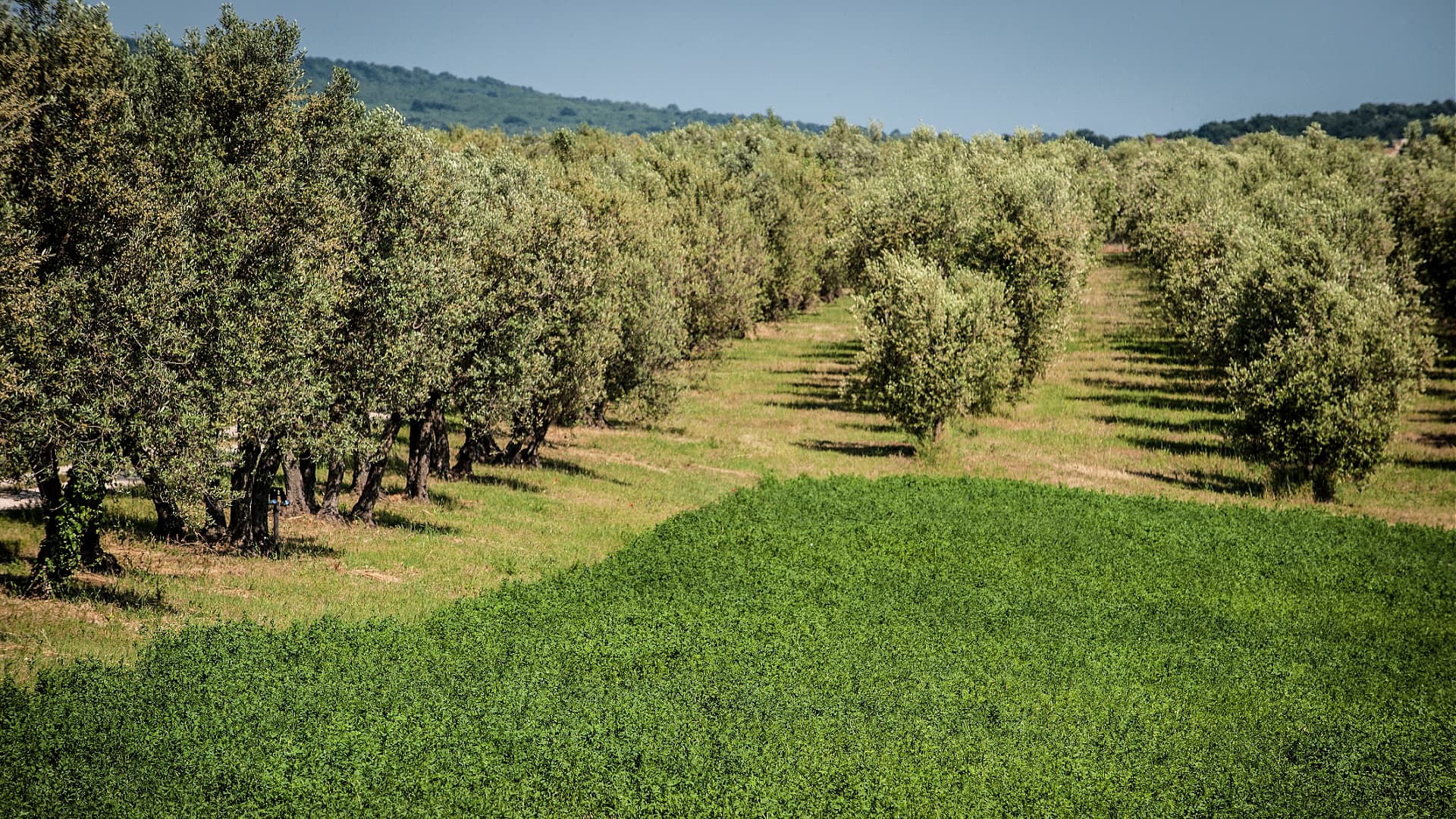
Tamia olive groves
“Our vision is founded on the connection with this beautiful and fertile land, which is clearly expressed by the sensorial profiles of our oils,” Re pointed out. “We invested a lot of effort in their creation, striving to reach a great harmony between their organoleptic components. After some years of activity and many experiments, I can say that we were able to give to our products their own distinguished and recognizable style.”
Tamia extra virgin olive oils are presented in the company showroom, recently established on the nearby Strada dell’Olio (Olive Oil Road). Olive oil roads cross many olive oil production territories in Italy. In the showroom, buyers and consumers can taste the oils and organize group tastings.
“With the purpose to be active part of the olive oil tourism sector, we show our terroir and the oils that come from it,” Re pointed out.
The cozy exhibit space designed by young architects displays the geological layers of the area, from the gray tuff to the red tuff to the so-called fish eye, up to the top layer, the yellow tuff. Villages in Tuscia are made from the yellow tuff layer.
“It is a kind of fashion atelier,” Re specified. “Indeed, this year’s extra virgin olive oils are being presented as ‘2022/23 Collection.’ ”
Re conceived another product line dedicated to the kitchen in the last few years in collaboration with some select growers. “We enjoyed working with other varieties to create different aromatic profiles suitable for various types of cuisine,” he pointed out, explaining that high-level catering is one of the company’s new focuses.
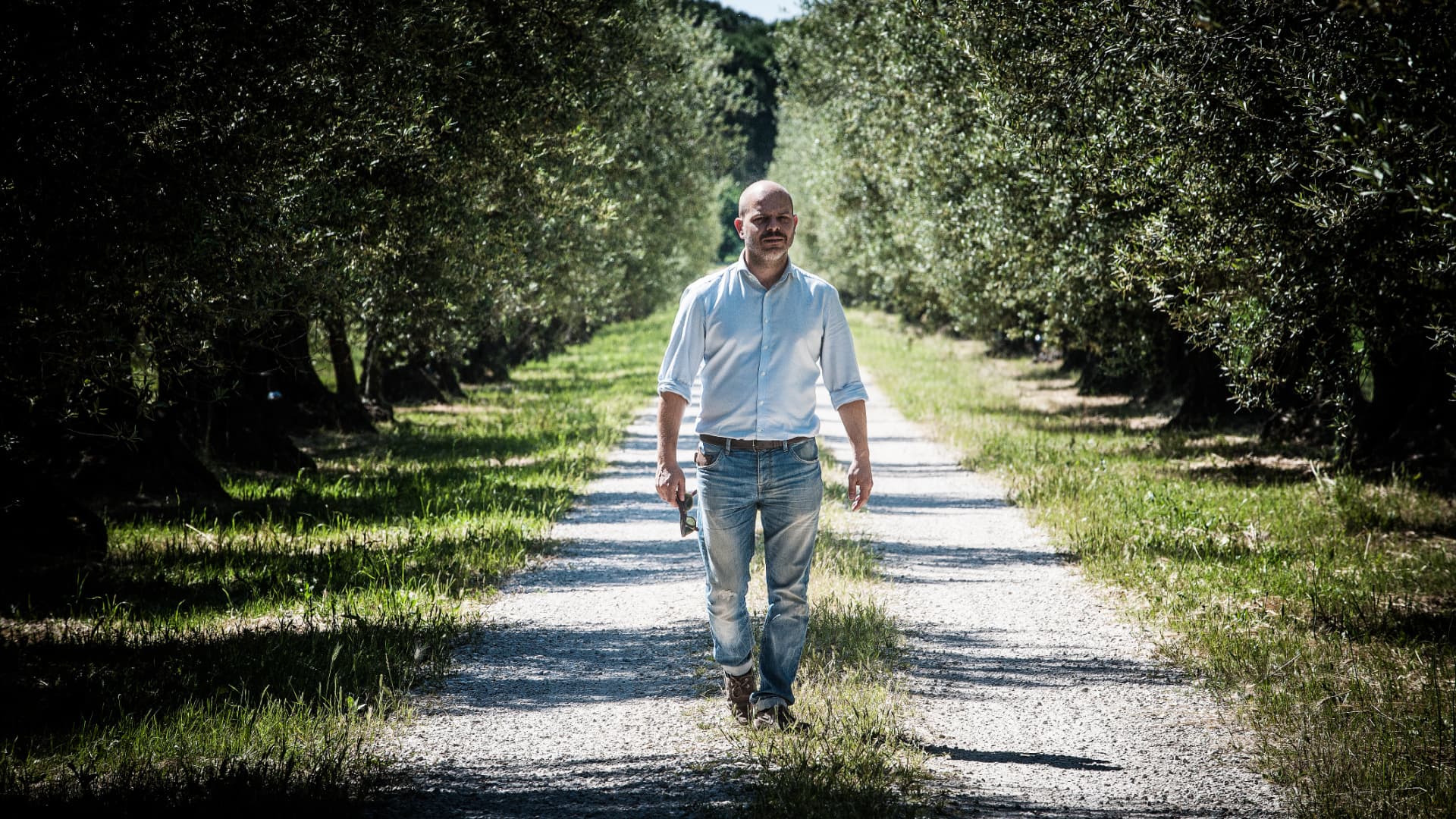
Pietro Re at Tamia farm (Photo: Maurizio Di Giovancarlo)
“We want to propose ourselves as sector’s players, meeting all the needs of the chefs with our extra virgin olive oils, which today are used in several fine restaurants.”
Re plans to establish a company mill of the latest generation to create his high-end products. In the meantime, the fruits are crushed in a trusted state-of-the-art facility with two pressing lines run by the company technicians. A group of professional tasters always attends the milling process.
“The production of top quality extra virgin olive oils requires an advanced technology machinery and a unique know-how in managing the mill,” our farmer considered. “Yet, the most important work in our search of excellence is done by tasters. Every day during harvest, they perform several sensorial tests, as soon as the oil comes out, until they find the right profile with a fair balance.”
“Today, the process is dominated by the human skills, which was not possible before,” stressed Re, who supervises the whole production process with a relentless focus. “I call them ‘profilers,’ who help us create the oils by tasting them, in complete synergy with the technicians, who knows how to intervene by making a new setting at each operation.”
Once extracted, the oil is promptly delivered to the tasters in a dedicated room with a soothing odorless environment, where they can fully concentrate on the samples.
“At each test, their features, the bitter and spicy attributes can be adjusted by the technicians, until the best possible result is achieved,” Re explained. “Our task is indeed to get the most out of the fruits every evening.”
At the end of the season, the work team tastes all the oils and figures out how to improve the production process for the next year.
“The game is all played on the details,” our farmer considered. “It is a work of precision that requires a long and painstaking job, to which must be added the extra care we put into cleaning the components of the mill, which means more time and commitment. But in the end, the results obtained repay us for all our efforts.”
Last year, additional work was also needed to tackle a substantial drought. Disaster was thankfully averted by rains that fell at the right time. Then, the harvesting operations were prolonged in some areas due to the late-ripening of Caninese olives. Yet this variety, together with Maurino and Itrana, maintained average production standards, while Moraiolo, Frantoio, and Leccino suffered a slight drop in production.
“It is now clear that we need to adapt to the ongoing climate change,” our farmer considered. “We have recently planted several olive trees and will continue to do it, which means giving a substantial contribution to the absorption of CO2. Furthermore, we have established a non-intensive planting pattern of 6 x 6 or 6 x 5 meters, which allows us to keep the territory healthy in addition to giving a landscape value to our work.”
“The decision to preserve and keep planting traditional groves is key part of our vision, which include the safeguard of biodiversity with several native varieties,” he pointed out. “This approach also allows us to make great oils, rich in polyphenols, therefore more fragrant and structured.”
“Our organic groves are seamlessly integrated in the landscape of Tuscia,” Re observed. “We realize that the choice of sustainability that we made already several years ago is functional in terms of olive oil tourism, but what we really do care is the protection of the environment. We believe that us farmers have a duty to at least to preserve the integrity of the territory, certainly not to make it worse but, if possible, even to improve it. Our mission is not only to produce the highest quality but also to protect our precious land.”
Share this article


